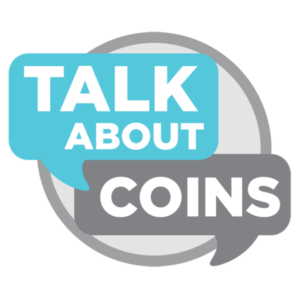What is a Mint Mark?
Coins are filled with images, markings, numbers, slogans and all types of information. One of the most recognizable markings is called a mint mark. A mint mark is simply a letter or symbol that identifies the mint at which the coin was minted at. On most U.S. coins the mint mark is located on the front (obverse) near the date. However, some coins have the mint located on the back (reverse).
What are the most common mint marks?
Most US coins have one of 3 mint marks that can be found. They are as follows:
- Philadelphia, Pennsylvania “P” – The Philadelphia mint has been producing coins since the early years of our nation. The Philadelphia mint started production of coins in 1793 as a way to establish an identity for our expanding and growing country. The mint still produces coins to this day.
- Denver, Colorado “D” – The Denver Mint is a branch of the United States Mint that struck its first coins on February 1, 1906. The mint is still operating and producing coins for circulation, as well as mint sets and commemorative coins. Coins produced at the Denver Mint bear a D mint mark.
- San Francisco, California “S” – The San Francisco Mint is a branch of the United States Mint and was opened in 1854. It was originally created to serve the gold mines of the California Gold Rush. It quickly outgrew its first building and moved into a new larger one in 1874. This mint is mainly used for the production of special issue coins and proof sets.
What other mint marks are there?
There are other mint marks that have been used in the past on U.S. currency. They all have mainly been used sparingly for minting of special limited edition coins or discontinued completely. The other mint marks you can find on coins that are most common are:
- New Orleans, Louisiana “O” – The New Orleans Mint operated from 1838-1909. It minted over 427 million gold and silver coins combined. It was closed during most of the Civil War. It produced many coins that were minted and stored in buildings, never even hitting general circulation.
- Carson City, Nevada “CC” – The Carson City Mint operated from 1863-1893 and started operating in 1870. It’s primary creation was to mint silver coins as the mint was closely located next to a silver mine. There were also gold coins minted here. This mint minted coins in 21 different years before closing down.
- West Point, New York “W” – The West Point Mint started in 1937 near the military academy West Point in New York. It spent 12 years producing pennies and is now mainly used for commemorative and special issue coins. In 2019 a series of “W” mint mark quarters were released as a special low mintage issue of nearly 25% of the normal mintage. These are sought after by collectors through purchasing directly and coin roll hunting.
Where do you find the mint mark on a coin
You can find a mint mark on a coin very quickly. It can be located on the front or back of the coin in various places. The quickest way to check is near the bottom half of the coin. Most mint marks (except the nickel) have mint marks located on the bottom half of the coin. Usually near the lower side of the presidential portrait or on the back near the motto.
What does it mean when there is no mint mark on a coin?
Sometimes coins have NO mint mark at all! How confusing.
Well it’s not actually confusing! It’s just a simple agreement that all coins that were made by the Philadelphia Mint do not carry a mint mark since it is the main production facility for the US Mint! That makes it really easy to know if a coin was minted in Philadelphia. If there is NO mint mark, it was. If there is a “P” it also was! Easy.
There are some exceptions to this rule as previously mentioned. One example is that in 1943 nickels had the “P” added to notate these coins contained silver. There was also a clad penny that was made in 2017 to bear the “P” mint mark! The coin was to signify the 225th anniversary of the United States Mint. It was sold as a limited edition penny in rolls from the US Mint’s website in 2017 during the holiday season.

